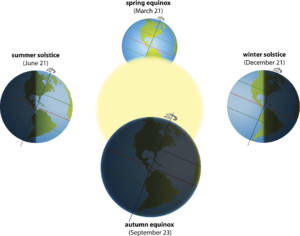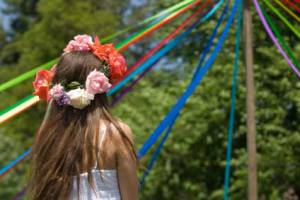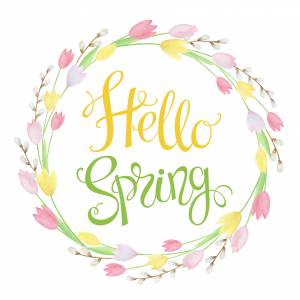This year, spring officially begins on March 20. This is the day when the earth’s axis is not tilted away from the sun’s rays but rather is perpendicular to them. The equinox is thought to be the day the earth gets a day and night of equal lengths, but in reality, it depends on how the sunrise and sunset are defined. Legend says that the spring equinox is the only day of the year that an egg can be perfectly balanced on its end. It’s not true, but its fun to try.
The spring wakes us, nurtures us and revitalizes us. How often does your spring come? If you are a prisoner of the calendar, it comes once a year. If you are creating authentic power, it comes frequently, or very frequently. Gary Zukav.
Holidays and Festivals Around the Equinox
Around the world, spring is celebrated in different ways. In North America, Easter is a rite of spring that is calculated based on the first Sunday following the first full moon after the spring equinox. This is why the date of Easter changes every year; it’s a lunar date. Another Abrahamic tradition of spring is the Jewish Passover, which generally falls on the first full moon after the spring equinox. In Mexico, visitors attend spring equinox in Teotihuacán, because legend says that portals of energy open at this place.
Burn Your Socks
In Annapolis, Maryland, U.S., the spring equinox brings in the boating season. Boat owners and employees celebrate by burning socks, because the boating community only wears socks through the winter. Astrologers see the vernal equinox as the beginning of the astrological year. They celebrate the day as International Astrology Day.
Ring in the New Year
In Iran, Nowruz, the New Year, occurs during the March Equinox, based on the Persian astronomical calendar. Jamshid, a mythological king of Persia, is said to have ascended to the throne on this day. He is remembered with two weeks of celebration. The day is a secular holiday for Iranians, but it’s a sacred day for Zoroastrians. Nowruz has also been added to the national calendar of Canada since 2007. It’s a time for spring cleaning, then decorating houses with garlands of roses and jasmine. New clothes are made for the celebration.
Honor Your Ancestors
In Japan, the spring or vernal equinox day, is an official public holiday. It’s a time to visit the graves of your ancestors and pay homage to them. Grave sites are cleaned. Offerings might be made to the ancestors. Homes are cleaned up. Many people use the spring equinox to make life changes. It’s also a day to celebrate nature after the long winter. Families get together, because many people have the day off.
See the Shadow Disappear
There are two days of the year when you can see a shadow disappear. Calculate the latitude of your location then subtract that number from 90. This is the angle measure you need when you put a stick in the ground. Using a compass, find south. Point a stick or ruler in that direction. Use a protractor to measure the angle to put the stick in the ground. At noon on March 20, the shadow of the stick will disappear. It won’t on any other day except the September equinox.
Tell Stories
March 20 is the day people around the world celebrate the culture of oral history. In 2017, the theme is “transformation.” The day had its roots in Sweden, but other countries picked up the tradition. It has taken time to become more common in Canada, but many organizations do recognize the day. Tell a story to your family as you await spring. Even if the trees aren’t budding or the flowers blooming, the spring equinox marks the time when you will soon see the first signs of renewal.





